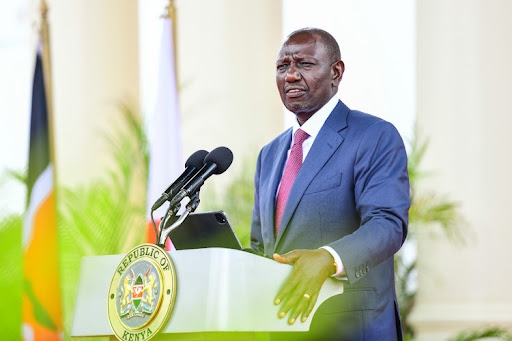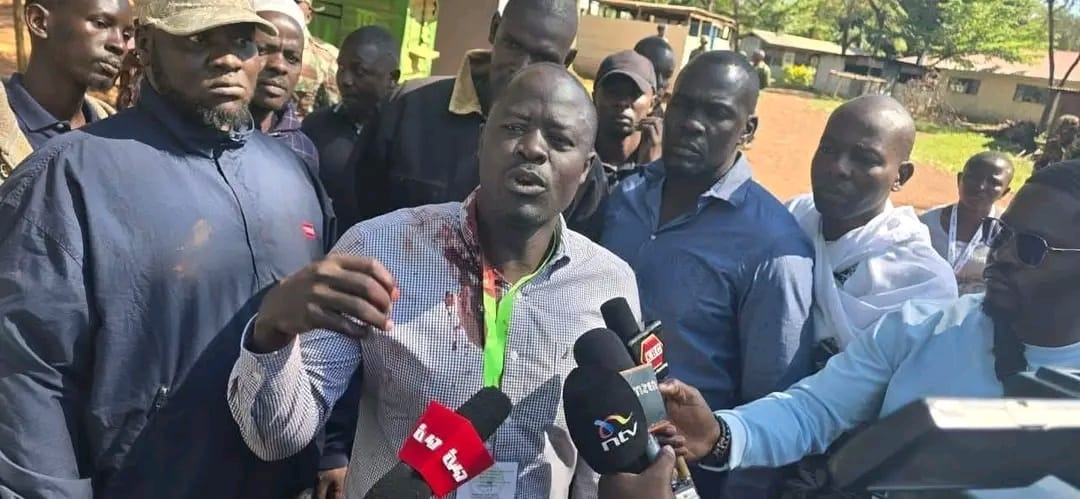The recurrence of drought countrywide depresses innumerable livestock farmers. The setbacks experienced are often attested to by carcasses of animals that shrivel to skeletons strewn on the ground.
One of the farmers striving to sustain a more dependable solution to massive livestock losses that arise due to scorched pastures is Hilary Kimeu. He’s determined to get sufficient and quality feeds for his animals. He’s been growing his own grass since 2006.
“My mind is focused on dairy cattle,” Kimeu, whose farm is in Mitendeu sublocation, Makueni county, says. He knows that if he’s to realise a continuous flow of earnings from milking, his destiny lies mostly on himself.
“All my grass comes from here,” he says, pointing to the seven-acre portion he’s reserved for growing the grass. His farm is 20 acres. He inherited it from his late father. “There’s no grass I buy from elsewhere.”
The seven-acre piece is thirsting for rain. The heat has burnt the ground so much that the scanty tufts of grass are crackling. But thankfully, he had harvested some bales, which he stacked on a shed raised by concrete stilts.
A friend of his introduced Kimeu, a retired senior assistant chief, to the growing of grass in 2005. However, the grass failed.
In 2006, he got some seeds of indigenous grass from the Kenya Agricultural and Livestock Research Organisation (Kalro) Kiboko centre. He sowed a sack of the seed. The resulting grass is what’s been regenerating whenever it rains. He’s been harvesting and storing this feed for use during drought.
The Arid and Range Land Research Institute, in Kiboko, Makueni county, is one of the 16 institutes of Kalro. Its director is Dr Simon Kuria. He says, “The grass varieties we are developing are the ones that are well suited to the arid and semi-arid conditions. Their water requirement is low so they are able to do well.”
At the Kiboko Kalro land is a 50-acre pasture seed-bulking site. At the time of visiting the farm, a tractor was harvesting grass. There’s another 34-acre field set aside for growing grass seed under irrigation. There are four varieties of rangeland grasses at the moment.
Rangelands in Kenya constitute about 85 per cent of the landmass, and these areas are mostly inhabited by pastoralists and agro-pastoralist communities. These areas experience low rainfall.
The grass varieties we are developing are the ones that are well suited to the arid and semi-arid conditions. Their water requirement is low so they are able to do well
GRASS SEED
Bryan Ogillo is a research scientist at Kalro, Kiboko. “This parcel of land is specifically for the production of range grass pasture seeds that we use to promote and avail to our farmers within the arid and semi-arid lands,” he says.
The grasses, Ogillo says, “are indigenous, and we promote them basically because they have proven to adapt to this ecological environment. They are also good in terms of biomass production”.
Kimeu recalls that whenever he sowed maize seed on his parcel of land and environmental conditions turned harsh, his entire crop would wither. “I’m not interested in growing maize anymore,” he says. “My focus is on grass for my cattle.”
So determined is Kimeu that he’s putting up another store for freshly harvested grass. While his neighbours’ animals feel the heat of drought, he says, “I wait for such a time when many livestock farmers suffer due to lack of pasture. I am comfortable.”
Kalro stresses that if the feed is conserved, farmers could be assured of even supply throughout the year. One way of conservation involves treating hay with urea, molasses and mineral salts. The result would be high-quality feed for animals even during dry season.
Kimeu considers himself self-sufficient. “Before I began keeping livestock, I would sell my grass to neighbours and other farmers from afar,” he says. “But I stopped. This is my livestock’s food security."
Dr Kuria cites one grass, Cenchrus Ciliaris (African foxtail), as among the types Kalro has taken to farmers. “That grass has not died,” he says. “We know it’s going to regenerate in the coming season.” Kalro anticipates working with the private sector to continue multiplying the seed.
Dr Kuria says Kalro is getting keener at ensuring the grass varieties being developed meet climatic, soil and disease-resistance requirements of the different agro-ecological regions.
WEEKLY EARNINGS
“The demand for grass seeds in Kenya is more than 20 tonnes per year and not many people are doing it,” Dr Kuria says. He admits Kalro has no capacity to meet the shortfall of grasses.
Kimeu cares for three dairy cows, a heifer and three calves. Besides, he keeps 10 goats, seven of which are Gala. Indigenous chickens also freely roam around his compound.
He obtains 25 litres of milk from the three Friesian cows he milks every dawn and late afternoon. He delivers 20 litres of his produce to Makindu Dairy firm. Four litres are delivered to small eateries. His family consumes one litre. He sells each litre at Sh55. “What I earn from selling milk is what I spend on buying foodstuff,” he says.
His earning from Makindu Dairy is Sh1,100 per day. He’s paid weekly. Therefore, he winds his week with Sh7,700. He earns Sh220 daily from what he supplies to the eateries. His tally for the month is almost Sh40,000.
His dream is to have a cattle breed that produces between 20 and 30 litres of milk per cow every day. “I would be very happy.”
The farmer says the Gala goats grow faster than the indigenous ones, are bigger upon maturity and are readily bought when taken to the market. “A newly delivered Gala goat rises and stabilises quickly on its feet.”
The Gala is a dual-purpose goat ideal for milk and meat production. “The goat puts on muscle very quickly,” Dr Kuria says. “It reaches about 50-65kg within a year.”
Dr Kuria says 10 acres are required to maintain one cow in a healthy condition. This is the natural carrying capacity. But with the grass varieties Kalro is growing under the Kenya Climate-Smart Agricultural Project (KCSAP), one acre could yield between 200 and 300 bales of quality hay material.
“One cow requires three per cent of its live weight feed material every day,” Dr Kuria says.
Whenever drought persists, Kimeu looks for signs the heavens are about to break loose, ushering in some rain. He knows the showers will cause his grass seed to sprout. Should the rains delay, he has a measure of relief. His livestock will not starve.
Edited by T Jalio















